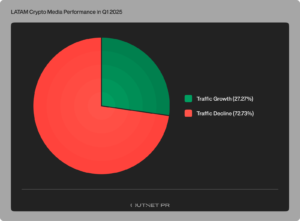
Staking vs. Trading: Which is More Profitable?
Investing in the cryptocurrency market offers various opportunities for generating profit. Two popular ways of generating profits in the cryptocurrency market are through staking and trading. Staking involves holding a particular cryptocurrency in a wallet and locking it up in a specific network to participate in the consensus process. In contrast, trading involves buying and selling cryptocurrencies on an exchange with the goal of profiting from price fluctuations.
Both staking and trading have their advantages and disadvantages, and investors need to understand the risks and rewards of each strategy to determine which is more profitable for their investment goals. In this article, we will explore the differences between staking and trading, their advantages and disadvantages, and how to choose the best strategy for your investment goals.
Staking
Staking is a long-term strategy for investing in the cryptocurrency market. It involves holding a particular cryptocurrency in a wallet and locking it up in a specific network to participate in the consensus process. Stakers are rewarded for validating transactions and creating new blocks on the network. Staking rewards vary depending on the cryptocurrency, the network’s conditions, and the staker’s participation level.
Advantages of Staking
One of the primary advantages of staking is its simplicity. Staking requires minimal technical knowledge, and investors do not need to monitor the market constantly. Additionally, staking is a low-risk investment strategy as the staker’s assets are locked up in a specific network, reducing the risk of market volatility.
Another advantage of staking is that it provides a steady stream of passive income. By holding a particular cryptocurrency and participating in the network’s consensus process, stakers receive rewards in the form of additional cryptocurrency, which can be reinvested or held as a long-term investment.
Finally, staking also helps to secure the network. By participating in the consensus process, stakers help to validate transactions and create new blocks, ensuring that the network remains secure and operational.
Disadvantages of Staking
One of the primary disadvantages of staking is its low liquidity. When staking, the investor’s assets are locked up in a specific network, reducing their ability to sell or trade their cryptocurrency. Additionally, staking rewards are often lower than the potential profits that can be made through trading.
Another disadvantage of staking is its long-term nature. Staking requires a long-term commitment to the cryptocurrency and the network, and investors may miss out on short-term market opportunities.
Choosing the Right Cryptocurrency for Staking
When it comes to staking, choosing the right cryptocurrency is crucial. Investors should consider the staking rewards, the network’s conditions, and the potential for growth. Additionally, investors should research the cryptocurrency’s fundamentals, including the team, the vision, and the use case, to determine its long-term potential.
Trading
Trading involves buying and selling cryptocurrencies on an exchange with the goal of profiting from price fluctuations. Traders use technical analysis and market trends to make informed decisions about when to buy and sell their cryptocurrencies. Trading requires a higher level of technical knowledge than staking and involves constant monitoring of the market.
Advantages of Trading
One of the primary advantages of trading is its potential for high returns. Trading can be a more profitable strategy than staking, as traders can take advantage of short-term market opportunities and capitalize on price fluctuations.
Additionally, trading offers higher liquidity than staking. Traders can buy and sell their cryptocurrencies at any time, allowing them to take advantage of short-term market movements.
Finally, trading can also provide a more diverse investment portfolio. Traders can invest in a range of cryptocurrencies and take advantage of market trends in various industries.
Disadvantages of Trading
One of the primary disadvantages of trading is its high-risk nature. Trading requires a higher level
of technical knowledge and market analysis, and traders need to constantly monitor the market to make informed decisions. Additionally, trading carries a higher risk of loss due to market volatility, making it a high-risk investment strategy.
Another disadvantage of trading is its time-consuming nature. Trading requires constant monitoring of the market and technical analysis, making it a time-consuming investment strategy.
Finally, trading can also be subject to fees, including transaction fees and exchange fees, reducing the potential profits.
Choosing the Right Cryptocurrency for Trading
When it comes to trading, choosing the right cryptocurrency is crucial. Traders should consider the cryptocurrency’s market trends, its historical price movements, and the potential for future growth. Additionally, traders should stay up-to-date with the latest news and developments in the space to make informed decisions about their investments.
Which is More Profitable?
Determining which strategy is more profitable depends on several factors, including the investor’s investment goals, risk tolerance, and technical knowledge. Both staking and trading have their advantages and disadvantages, and investors need to consider their investment goals to determine which strategy is right for them.
For investors looking for a low-risk, passive income strategy, staking may be the better option. Staking provides a steady stream of passive income and helps to secure the network, but the potential returns are generally lower than trading.
On the other hand, for investors looking for high returns and are willing to take on higher risk, trading may be the better option. Trading offers higher potential profits but requires a higher level of technical knowledge, constant monitoring of the market, and carries a higher risk of loss.
Ultimately, the decision of whether to stake or trade comes down to the investor’s individual investment goals, risk tolerance, and technical knowledge. It’s important to research both strategies thoroughly, understand the risks and rewards, and make informed decisions about your investments.
Conclusion
Staking and trading are two popular ways of generating profits in the cryptocurrency market. Staking offers a low-risk, passive income strategy, while trading offers higher potential profits but carries a higher level of risk. The decision of whether to stake or trade depends on the investor’s investment goals, risk tolerance, and technical knowledge. Ultimately, investors need to research both strategies thoroughly, understand the risks and rewards, and make informed decisions about their investments.
I have worked in the cryptocurrency industry for over 5 years and have written numerous articles on the subject. I am well-versed in all aspects of cryptocurrencies and blockchain technology, and am an expert in the field.








